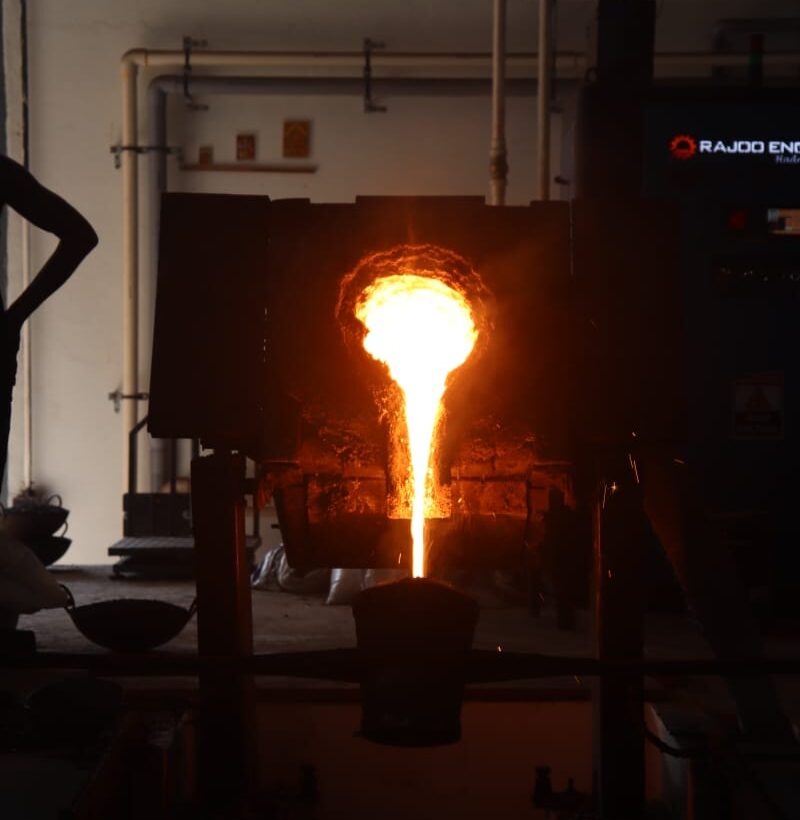Home » Process
Before the casting process begins, we perform several critical steps. A number of checks are performed before casting begins, such as inspecting raw materials, testing sand mixtures, and examining cores and modulus. The casting process ends with the final inspection of the product.
Sand casting is a metal fabrication process that involves pouring molten metal into a sand mold. The mold is made of sand particles held together with a binding agent.


Sand casting is a versatile method that can produce complex shapes and accommodate various metal alloys. It can be used to cast items as small as pins or as large as railway locomotives.
Sand castings often require additional machining to reach final dimensions or tolerances. Parts may also be heat-treated to improve dimensional stability or properties.

SHREE HARI METACAST is a leading manufacturer and supplier of CI and SGI Castings, offering customized solutions to meet client needs.